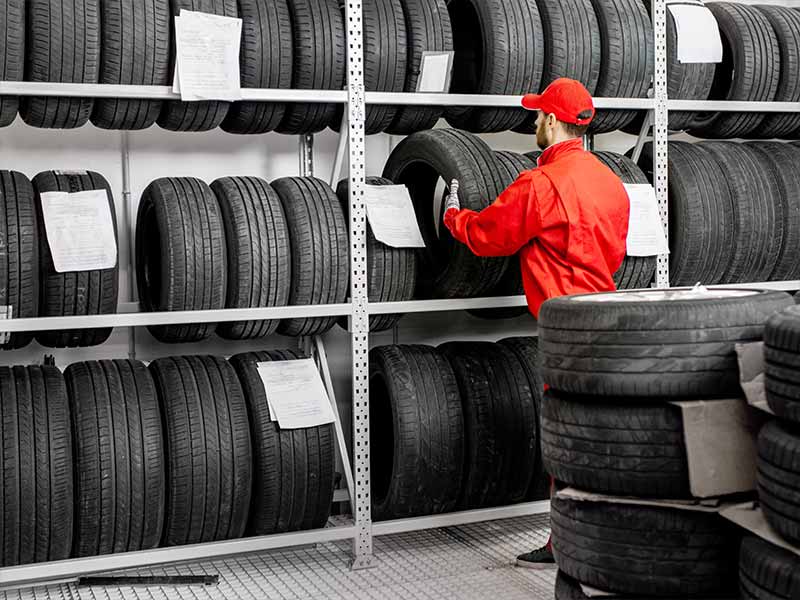Tires last only six years no matter the tread depth or mileage when being used regularly, but how long will tires last when properly stored? Ten years or more is possible. Some say they can have an almost unlimited shelf life if you know how to store them correctly.
How Long Can Tires Be Stored?
If properly stored, car tires can last as long as 10 years or more. Tires last 6 years without any precautions.
Dry rotting of the rubber compounds used by tire manufacturers occurs due to exposure to adverse environmental conditions.
Proper care can have a significant impact on a tire’s shelf life.
The way you store tires is the key to ensuring your unused tires last as long as possible. As tires age, they lose elasticity and break down. This can be slowed down dramatically.
Let’s take a closer look.
Pictures Of Dry Rot Tires
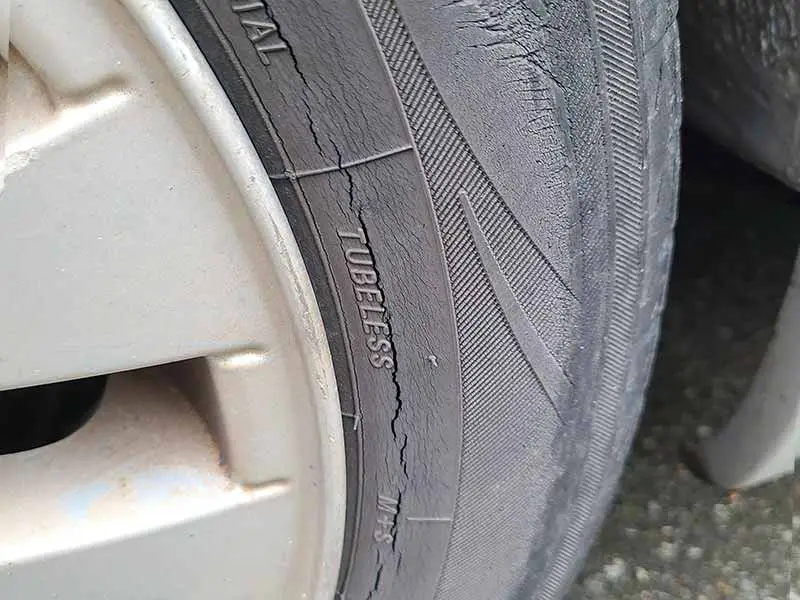
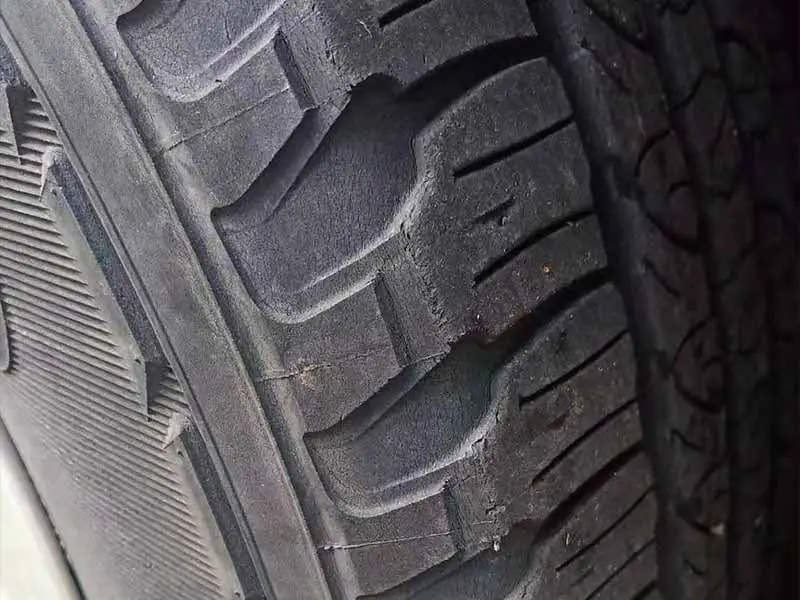
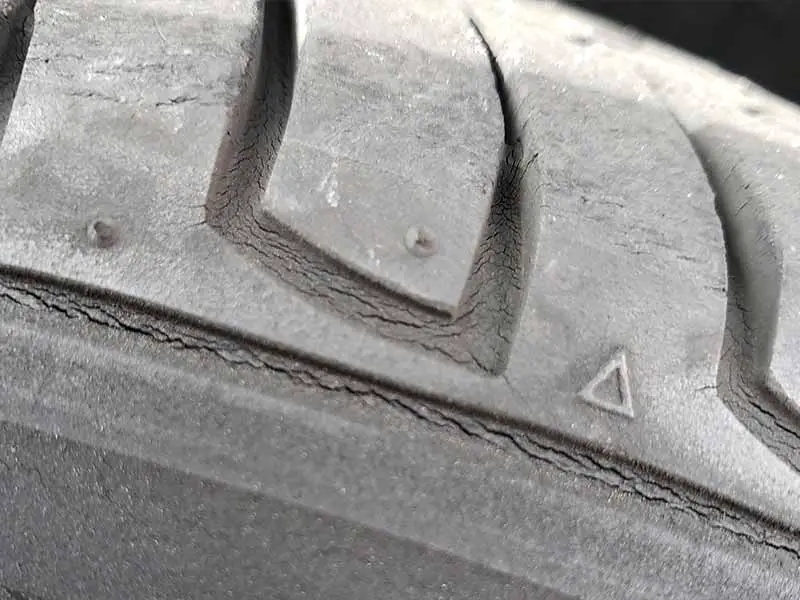
How Long Before Tires Dry Rot
Incorrectly stored tires or those being used daily, or even mounted on a parked car, should be replaced after 6 years since this is the point that dry rotting will typically make old tires unsafe.
Tires that have been properly stored in an airtight plastic bag, at a controlled temperature, and away from direct sunlight, can last 10 years or more.
What Causes Dry Rot On Tires
Tire rubber compound breaks down over time due to various harmful environmental conditions and elements. Let’s cover each one and how to avoid them causing damage to your tires so that they will last as long as possible when stored.
Ozone Exposure
Ozone is a natural atmospheric element that is particularly damaging to tires over time. There are also sources of excess ozone you likely have in your garage or other places you may consider storing tires that you didn’t realize.
Many types of electric devices will produce ozone when in use. Electric motors, generators, welders, and even power lines and light switches, can all be sources of damaging ozone.
Tire manufacturers add a protective chemical called antiozonant that is designed to neutralize ozone as it comes into contact with the tire rubber.
Unfortunately, this protective additive can only work just so long before it is all used up. At about six years of age, the antiozonant will have lost its effectiveness and dry rot will begin to accelerate.
It’s best to store tires in an airtight tire storage bag that will hold in the antiozonant chemicals and keep out ozone floating around in the air where your tires are being stored.
Sun Exposure
When storing tires, it’s best to avoid exposure to direct sunlight. Ultraviolet rays in sunlight will damage tires over time. UV radiation dries out tires and will accelerate sidewall cracking damage.
Often, tire storage bags are transparent or translucent. Opaque tire storage bags will allow you to kill two birds with one stone by sealing out ozone and preventing UV light from coming into direct contact with the tires themselves.
Temperature Fluctuations
Temperature fluctuations put a lot of stress on your tires. Heat cycling or exposure to extreme cold is especially tough on winter tires not designed for temperatures above 40º F or summer tires not designed for temperatures below 40º F.
Any tire will degrade more rapidly when not stored in a temperature-controlled environment.
You should never store tires outside. Even if sealed in plastic bags or tire totes, the tires won’t hold up well.
A garage is a better choice, but still isn’t a great place to store tires. Many garages are not temperature controlled, at least here in the southern United States. If you do have an even semi-temperature-controlled garage or storage space, that could be a good choice.
Occasionally I’ll get asked if an attic is a safe place to store tires. Most attic spaces are also not temperature controlled. If you happen to have a temperature-controlled attic, that’s a great place to keep your tires safe that will keep them well protected from temperature extremes and weather. Otherwise, the extreme temperatures will do damage over time.
Moisture
High humidity or exposure to rain or standing water can be harmful to tires over time. Be sure you’re storing tires in a dry space that will prevent any sort of moisture from coming into contact with the rubber.
This may seem counterintuitive since tires are specifically designed to be used in rainy conditions, but prolonged exposure to moisture can wick away protective oils and expose the rubber to harsh solvents or VOCs that happen to be in the water they come into contact with.
Petroleum-Based Cleaners
Petroleum-based cleaners are damaging to your tires. While it’s a good idea to clean tires before storing them, be sure to do so with a gentle car wash shampoo and a tire brush.
Most tires these days will benefit from a good cleaning and tire dressings. Some will say that tire dressings should be avoided, but this is no longer the case. Modern tire shine products no longer contain petroleum distillates that can damage your tires. In fact, they can help the rubber compounds retain the natural oils that will slow the dry rotting process.
How To Stack Tires For Storage
Tires that haven’t been mounted should be stood upright and not laid on their side. Since they don’t have the added weight of the metal wheel, this is the best orientation to store tires since the tires are stronger in this position and will retain their shape best.
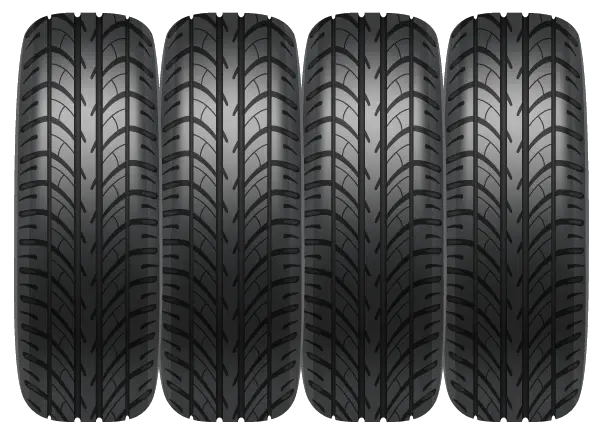
Never hang unmounted tires. Unmounted tires should never be hung since this can damage the tire bead and make it impossible for the tire to hold air properly or cause it to be unsafe to be used again.
Tires mounted on wheels should be stacked on their sides to avoid flat spots around the circumference of the tire. Stacks of tires shouldn’t be too high, but storing four tires mounted on wheels isn’t an issue. If you have more than four tires you’re storing, you should stack them separately, if you have the space, to avoid them falling and damaging the wheel face or even the tires themselves.
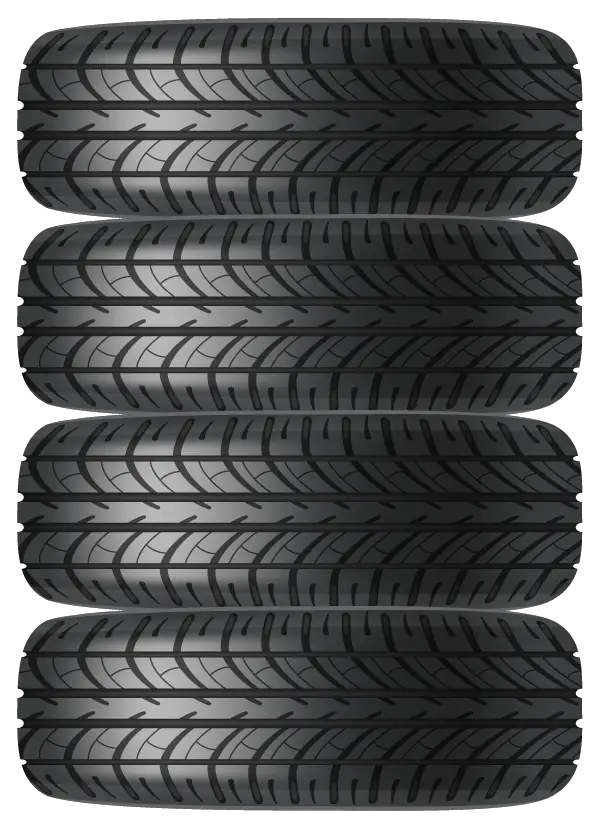
Tires mounted on rims can be hung to reduce the chances of the weight affecting the shape of the tires as they sit unused for extended periods. Depending on whether you have your tires in bags or tire totes, this may not be practical.
How To Keep Tires From Dry Rotting In Storage
The following are the best practices for keeping your old tires in good shape and working as well as new tires by stopping the aging process in its tracks.
- Seal tires in an airtight plastic bag and remove as much air as possible from the bag itself.
- Protect your tires from ultraviolet radiation, either from direct sunlight or strong artificial light from fluorescent lamps or other strong light sources.
- Keep the tires under temperature-controlled storage conditions to protect them from extreme heat and freezing temperatures.
- Protect tires from humidity, moisture, and ozone-producing equipment.
When Is Dry Rot On Tires Dangerous
Once dry rot exceeds 2mm of depth it should no longer be used and the tire should be properly discarded. Any crack that shows cords or belts should also no longer be driven on and replaced immediately.
Dry Rot Tire Sidewall Cracking Chart
5 Levels Of Dry Rot
Negligible Cosmetic Sidewall Dry Rot

Minimal Sidewall Dry Rot

Minor Sidewall Dry Rot

Significant Sidewall Dry Rot

Major Sidewall Dry Rot
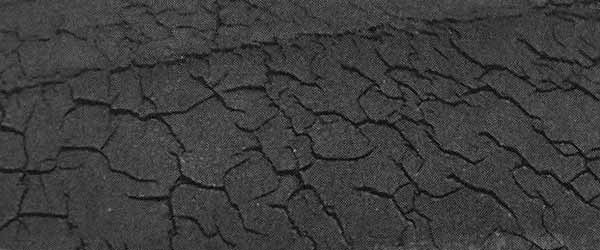
Resources
Below are some links you may find helpful when learning about tires
Final Thoughts
A tire’s life can be shortened by manmade pollution, sunlight, ozone exposure, and more. But much of this can be dealt with by climate-controlled warehouse storage and environmental conditions such as a dry environment.
Generally speaking, replace your tires every 10 years. But if you still have a lot of tread depth, compare to the dry rotting chart, but check with your tire professional before deciding if your tires are safe to use.
Good luck and happy motoring.
